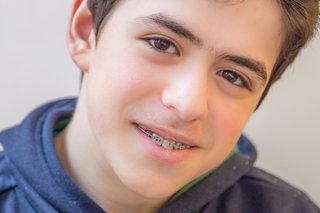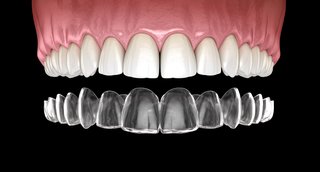Braces are fitted to move teeth as part of orthodontic treatment.
Before you get braces
You'll need to have healthy teeth and gums before you can have braces fitted. This is because orthodontic treatment can take up to 2 years.
It is also very important that you keep a low sugar intake and keep your teeth and braces very clean while you're wearing it. Otherwise there is a risk of tooth decay and gum disease during your treatment.
You will need braces for up to 2 years
You'll usually need braces for between 6 months to 2 years. It depends on the teeth to be moved. Teeth are moved slowly during orthodontic treatment.
Most patients visit their orthodontist every 6 to 8 weeks for regular adjustments.
The best age to get braces
Most orthodontists prefer to start treatment when children are 12 to 13 years old. This is when all the primary (baby) teeth have been lost but the jaws are still growing. It's also fine to have treatment when they are older.
Some children have complex treatment needs, such as multiple missing teeth or needing jaw surgery as part of their treatment. For these children, braces may not be fitted until their older teenage years.
For problems such as impacted teeth, treatment may need to start shortly after the problem is identified. Impacted teeth are teeth that are blocked from growing into the mouth.
What braces look like
Fixed braces

Fixed braces are the most common type of braces.
They are a non-removable brace made up of metal or see-through ceramic brackets. The brackets are glued to each tooth and linked with wires.
The wires will be noticeable on the front of your teeth. Removable braces may also be needed to treat children with misaligned jaws.
Removable aligners

Removable aligners are also used to move teeth.
These are clear, flexible plastic appliances that fit over teeth to push them into new positions each time an aligner is changed. White attachments fixed onto the teeth for the duration of treatment are nearly always needed to help the aligners move the teeth.
You take them out at mealtimes or to clean them, but are otherwise worn all the time.
Braces and caring for your teeth
Braces usually work very well, but it takes time to move teeth. You need to see your dentist regularly and wear your braces for it to be successful.
Follow your orthodontist's dietary advice
You need to watch what you eat – for example, avoiding sugary foods and drinks. Your orthodontist will give you advice on what you should and should not eat.
Clean your teeth well
Braces can trap food and cause more plaque to build up than usual. You'll need to take extra care with cleaning your teeth.
You should continue to see your regular dentist while having orthodontic treatment.
Wear a retainer
You'll need to wear a retainer for some time after your treatment has finished. This stops your teeth moving back to the position they were in before treatment.
There are many different types of retainers. They can be either removable or permanently fixed onto your teeth.
